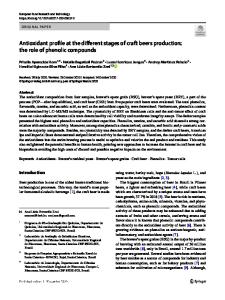Schisandra henryi C. B. Clarke in vitro cultures: a promising tool for the production of lignans and phenolic compounds
- PDF / 1,225,195 Bytes
- 16 Pages / 595.276 x 790.866 pts Page_size
- 62 Downloads / 293 Views
ORIGINAL ARTICLE
Schisandra henryi C. B. Clarke in vitro cultures: a promising tool for the production of lignans and phenolic compounds Karolina Jafernik1 · Agnieszka Szopa1 · Magda Barnaś1 · Michał Dziurka2 · Halina Ekiert1 Received: 26 March 2020 / Accepted: 21 July 2020 © The Author(s) 2020
Abstract We initiated and optimized in vitro culture conditions of the endemic Chinese plant species—Schisandra henryi C. B. Clarke. Different types of in vitro solid cultures (microshoot and callus), cultivation periods (10, 20, and 30 days), and selected concentrations of BA, IBA, GA3 (0 to 3 mg/l) in the Murashige and Skoog (MS) medium were tested. The presence of dibenzocyclooctadiene lignans (schisandrin, gomisin G, schisantherin A and B, deoxyschisandrin and schisandrin C), dibenzylbutane lignans (hernicine B), aryltetralin lignans (wulignan A1 and A2, epiwulignan A1, enshicine, epienshicine and dimethylwulignan A1), and triterpenoids: kadsuric acid and schisanhenric acid was confirmed by UHPLC–MS/MS analysis. Using HPLC–DAD, the qualitative and quantitative profiles of dibenzocyclooctadiene lignans, phenolic acids and flavonoids in methanolic extracts from biomass were estimated. The maximum total amounts of these groups of metabolites were 873.71, 840.89 and 421.98 mg/100 g DW, respectively. The main compounds were: schisantherin B (max. 622.59 mg/100 g DW), schisantherin A (max. 143.74 mg/100 g DW), neochlorogenic acid (max. 472.82 mg/100 g DW), caftaric acid (max. 370.81 mg/100 g DW), trifolin (max. 138.56 mg/100 g DW) and quercitrin (max. 122.54 mg/100 g DW). The highest total amounts of secondary metabolites estimated in the extracts from in vitro cultures were, respectively, 13.0, 7.0, and 1.4 times higher than in the leaf extracts analyzed for comparison. This is the first report on the biosynthetic potential of cells from Schisandra henryi in vitro cultures. Key message The initiation, broad optimization and comprehensive phytochemical studies of lignans, phenolic acids and flavonoids in the extracts from Schisandra henryi microshoot and callus in vitro cultures were elaborated for the first time. Keywords Schisandra lignans · Phenolic acids · Flavonoids · Shoot-differentiating culture · Undifferentiating culture · HPLC–DAD · UHPLC–MS/MS
Introduction Communicated by Amita Bhattacharya. Electronic supplementary material The online version of this article (https://doi.org/10.1007/s11240-020-01895-2) contains supplementary material, which is available to authorized users. * Agnieszka Szopa [email protected] 1
Chair and Department of Pharmaceutical Botany, Medical College, Jagiellonian University, Medyczna 9, 30‑688 Kraków, Poland
The Franciszek Górski Institute of Plant Physiology, Polish Academy of Sciences, ul. Niezapominajek 21, 30‑239 Kraków, Poland
2
Schisandra henryi C. B. Clarke (yi geng wu wei zi)— Schisandraceae—is an endemic plant species native to the Yunnan Province of China (Saunders 2000; Szopa et al. 2019a). The medicinal properties of fruit extracts of this species are widely
Data Loading...











